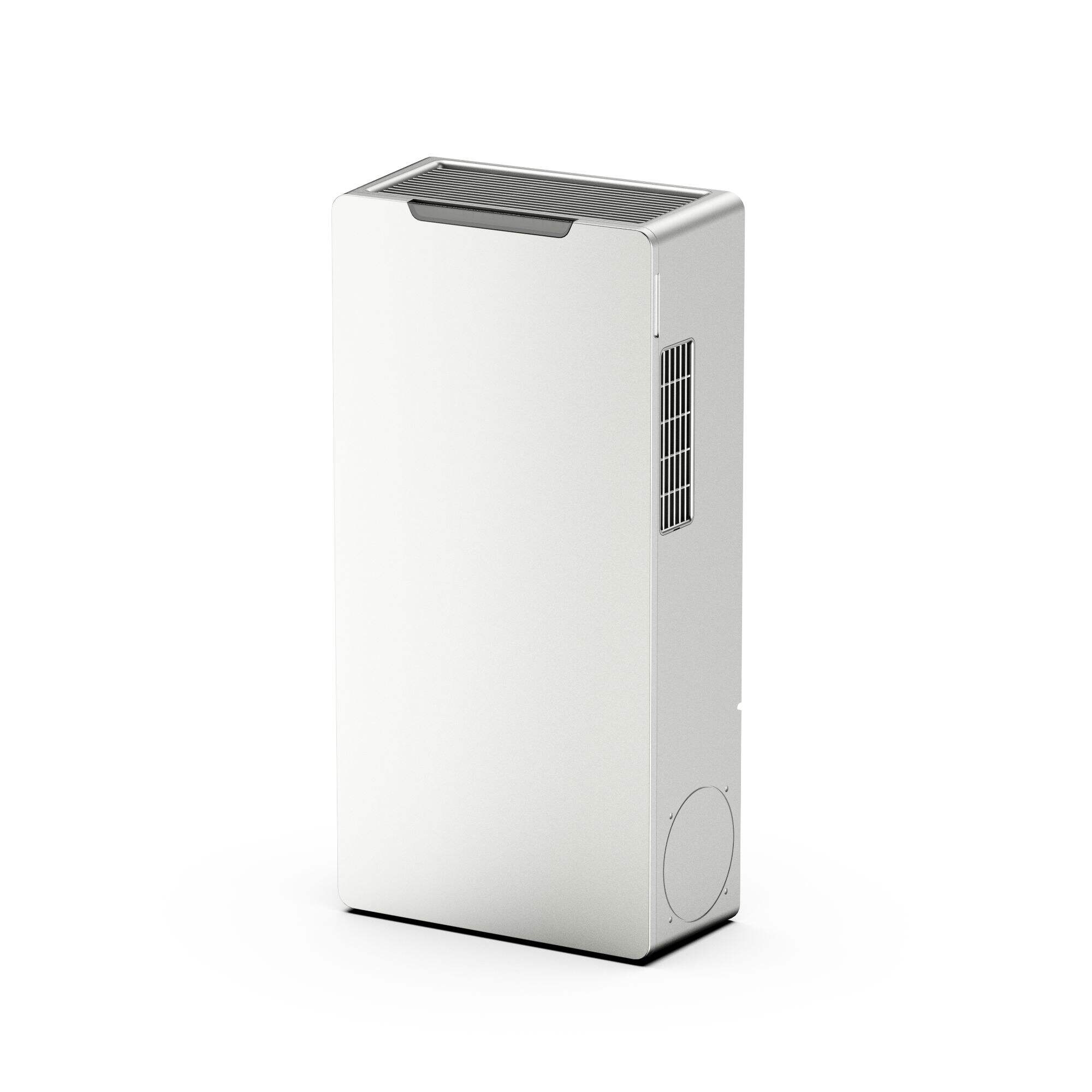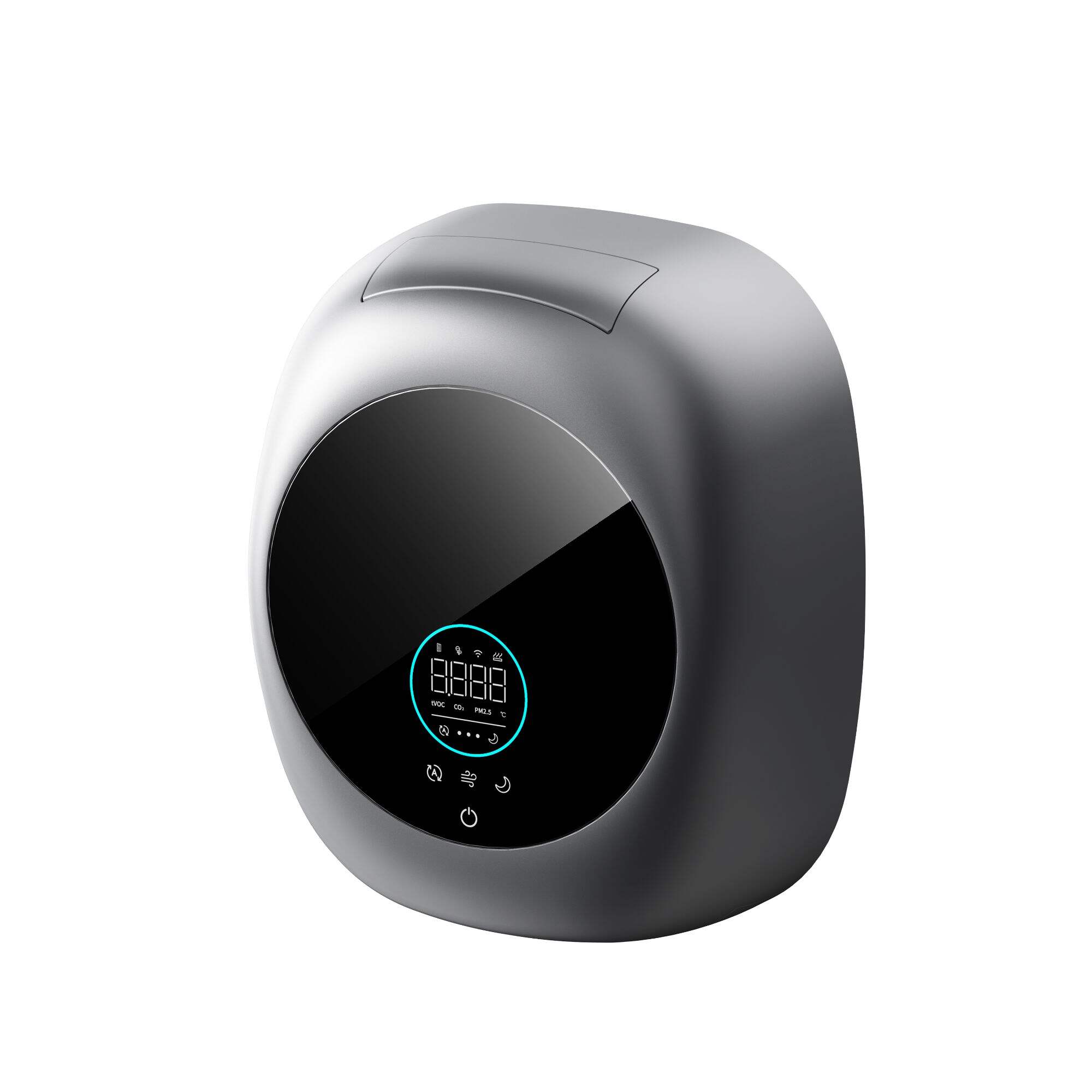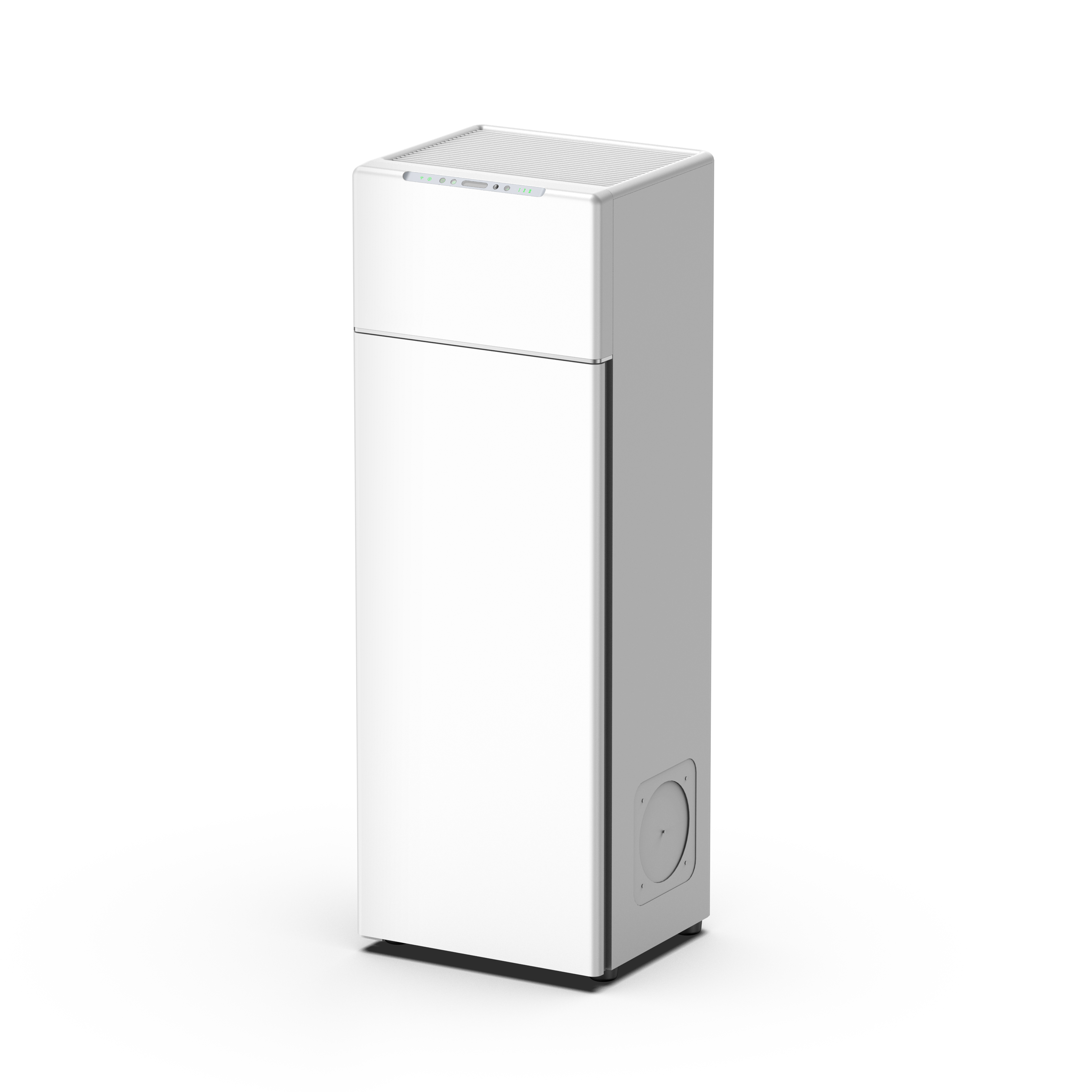홈 환기기: 전략적 배치를 통한 실내 공기질 향상
실내 공기질을 위한 홈 환기기의 중요성
적절한 환기의 건강상 이점
적절한 환기는 단지 편안한 환경을 유지하는 데 중요한 역할을 할 뿐만 아니라 건강에도 필수적인 이점을 제공합니다. 신선한 공기의 꾸준한 유입을 통해 우리는 인지 기능을 향상시키고 호흡 건강을 지원할 수 있습니다. 연구에 따르면 적절한 환기는 실내 공기 질이 나쁜 것과 관련된 질병의 위험을 낮추는데, 이는 호흡기 감염과 알레르기 반응 등이 포함됩니다. 또한 환기는 습도를 조절하는 데 도움을 주어 곰팡이 성장을 방지하고 더 안전한 실내 환경을 만드는 데 중요한 요소입니다. 곰팡이와 습기는 다양한 건강 문제와 연관되어 있으므로 이러한 요소들을 관리하는 것은 장기적인 건강에 매우 중요합니다. 따라서 효율적인 환기 시스템에 투자하고 이를 주거 설계에 통합하면 실내 공기 질과 건강 결과를 크게 개선할 수 있습니다.
공중 부유 물질 및 알레르기 원인물질 줄이기
효율적인 환기 시스템은 먼지, 반려동물 비듬, 꽃가루와 같은 공기 중 오염물질을 줄이는 데 중요한 역할을 하며, 이러한 물질들은 알레르기 증상을 유발할 수 있습니다. 미국 알레르기 천식 면역학회(American Academy of Allergy, Asthma & Immunology)는 환기가 잘 된 공간이 알레르기 반응을 상당히 감소시켜 공기 중 알레르겐으로 고통받는 사람들에게 완화를 제공한다고 강조합니다. 또한, 산업용 기기 또는 휘발성 유기화합물(VOCs)을 배출하는 가정용 제품을 사용하는 주택의 경우 적절한 환기는 이러한 잠재적으로 유해한 입자의 축적을 방지하기 위해 필수적입니다. 오염물질을 제거함으로써 거주자와 방문객 모두에게 실내 공기 질 저하로 인한 악영향으로부터 보호받을 수 있는 건강한 실내 환경이 조성됩니다.
최대 효율성을 위한 전략적 배치 팁
다양한 활동이 집중되는 생활 공간
사람과 활동이 많은 거실 지역에 환기구를 설치하는 것은 최적의 공기 품질을 유지하기 위해 매우 중요합니다. 부엌이나 거실과 같은 공간들은 공기가 빠르게 오염될 수 있는 곳입니다. 이러한 핵심 구역에 환기구를 설치하면 바쁜 시간대에 오염 물질이 쌓이는 것을 최소화하면서 신선한 공기가 효과적으로 순환할 수 있도록 보장할 수 있습니다. 예를 들어, 부엌 근처에 환기구를 설치하면 조리 시 발생하는 연기를 빠르게 배출할 수 있습니다. 마찬가지로, 거실에 하나를 설치하면 가족이 모이거나 손님이 방문할 때 공기 품질이 최적화됩니다.
오염원 근처
부엌, 차고, 욕실과 같은 오염원 근처에 가정용 환기기를 설치하는 것은 매우 중요합니다. 이러한 공간은 연기, 냄새, 습기와 같은 유해한 입자가 쌓이기 쉽습니다. 이들 오염원 근처에 환기기를 전략적으로 배치하면 오염 물질을 신속히 흩어 지게 할 수 있어 실내 공기를 더 깨끗하게 유지할 수 있습니다. 예를 들어, 부엌의 환기기는 조리 시 발생하는 연기를 빠르게 처리하고, 욕실 근처의 환기기는 과도한 습기를 관리하여 곰팡이 발생 위험을 줄여줍니다.
이동식 선풍기로 공기 흐름 균형 맞추기
휴대용 선풍기를 집 환기 시스템과 통합하면 실내 공기 순환을 크게 향상시킬 수 있습니다. 이상적인 균형을 이루기 위해 휴대용 선풍기를 환기 시스템이 생성하는 공기 흐름을 보완하도록 배치하는 것이 중요합니다. 이는 효과적인 공기 순환을 도모하면서도 불편함 없이 유지할 수 있습니다. 다음은 몇 가지 팁입니다: 선풍기를 열린 창문에서 환기구 쪽으로 공기를 끌어들이도록 배치하여 방 안에 신선한 공기를 고르게 분산시킵니다. 거주자에게 직접 바람이 가는 것을 피하는 것이 중요하므로, 이로 인해 불편함이 발생할 수 있기 때문입니다. 이러한 설정은 두 시스템의 효율성을 최대화하고 더 건강한 실내 환경을 보장합니다.
환기 성능을 향상시키기 위한 주요 기능
에너지 효율적 운영
에너지 효율이 높은 환기 장치를 선택하는 것은 경제적이고 환경적인 이유로 중요합니다. 가변 속도 모터와 에너지 스타 등급 모델 같은 기술을 선택함으로써 사용자는 전기 요금에서 큰 절감 효과를 누릴 수 있으며 동시에 탄소 배출량을 줄이는 데 기여할 수 있습니다. 에너지 효율이 높은 환기는 최적의 공기 품질을 유지하는 것뿐만 아니라 지속 가능하게 유지하는 것을 보장합니다. 예를 들어, 가변 속도 모터가 있는 모델들은 환기 필요에 따라 팬 속도를 조정하여 성능과 에너지 소비를 동시에 최적화합니다.
스마트 습도 제어 통합
스마트 습도 제어는 현대 환기 시스템에 있어 혁신적인 변화를 가져옵니다. 실내 습도 수준에 따라 환기를 자동으로 조절함으로써 이 기능은 결로와 곰팡이 발생을 방지하여 거주 환경을 보호합니다. 실내 공기 저널에 발표된 연구에서는 스마트 시스템이 이상적인 습도를 유지하는 데 있어 효과적이며, 전체 실내 공기 품질을 향상시킨다는 점을 강조했습니다. 이러한 기능을 통합하면 사용자는 수동 조정의 번거로움 없이 쾌적하고 건강한 실내 환경을 즐길 수 있습니다.
첨단 필터레이션 시스템
HEPA 필터와 같은 첨단 필터링 시스템을 환기 장치에 통합하면 공기 중 입자를 효과적으로 포착함으로써 실내 공기 질을 크게 향상시킬 수 있습니다. 이 시스템은 작은 오염물질까지 포착하도록 설계되어 더 깨끗하고 건강한 공기 순환을 보장합니다. 환경 보호 기관 (EPA) 의 수치를 포함한 연구 결과, HEPA 필터는 0.3 미크론의 미세먼지 중 최대 99.97%를 포착할 수 있다는 것을 확인합니다. 이러한 시스템을 유지하기 위해서는 제조업체의 지침에 따라 필터를 정기적으로 교체하거나 청소하는 것이 필수적이며 항상 최적의 효율으로 작동하는지 확인합니다.
더 깨끗한 공기를 위한 최고의 가정용 환기 솔루션
에너지 절약형 소형 신선 공기 환기기
소형 환기 장치는 에너지 절약과 신선한 공기 공급 사이에서 뛰어난 균형을 제공합니다. 이 장치들은 고효율 에너지 사용을 중시하여, 친환경적인 선택을 원하는 사람들이 탄소 배출량을 줄이면서도 지속적인 공기 순환을 유지할 수 있도록 해줍니다. 제품 처럼 에너지 절약형 소형 신선 공기 환기기 알레르기 유발물질과 오염 물질을 걸러내 공기 청정도를 유지하는 데 효과적이며, 조용한 작동으로 긍정적인 사용자 피드백을 받고 있습니다.
PTC 히터와 함께 가구 신선한 공기 환기
PTC 가열 기술이 적용된 가정용 신선 공기 환기기는 통풍과 함께 추가적인 따뜻함을 제공하는 혁신적인 솔루션입니다. 이 장치는 추운 계절에 특히 유용하여, 쾌적한 환경을 유지하면서 신선하고 여과된 공기를 제공합니다. 사용자들은 이러한 환기기가 가열과 공기 순환 기능을 신뢰성 있게 그리고 원활하게 통합했다는 점을 칭찬하며, 이는 제품에서 확인할 수 있습니다. PTC 히터와 함께 가구 신선한 공기 환기 .
세척 가능한 사전 필터가 있는 지능형 신선한 공기 환풍기
세척 가능한 사전 필터가 있는 지능형 신선 공기 환기기는 유지보수의 편리성과 장기적인 비용 혜택으로 칭찬받고 있습니다. 이 장치는 단순히 공기를 여과하는 것뿐만 아니라 현재 실내 공기질 상태에 따라 작동을 조정하여 주거 환경을 개선하기 위한 정교한 솔루션을 제공합니다. 지능형 신선 공기 환기기 효과적인 공기 정화와 세척이 쉬운 필터 시스템으로 인해 유지보수가 간편한 것을 원하는 주택 소유자들에게 인기 있는 선택입니다.
장기적인 결과를 위한 유지보수 및 최적화
정기적인 필터 청소 및 교체
환기 시스템의 최적의 공기 품질과 최고 성능을 유지하기 위해서는 정기적인 필터 청소와 교체가 중요합니다. 이 작업은 먼지가 쌓이는 것을 방지하고 공기가 효율적으로 흐르도록 하여 환기 시스템의 효율성을 유지시켜줍니다. 필터는 적어도 3개월에 한 번은 점검해야 하며, 특히먼지가 많은 환경이나 시스템이 많이 사용되는 경우 더 자주 점검해야 합니다. 필터 유형에 따라 전문가들은 3개월에서 6개월마다 교체하는 것을 권장합니다. 이러한 루틴한 유지 보수는 시스템의 공기 품질과 효율성을 유지하는 데 매우 중요합니다.
계절별 시스템 조정
계절에 따라 환기 장치 설정을 조정하면 성능 효율이 크게 향상될 수 있습니다. 예를 들어, 여름에는 냉방을 최적화하도록 설정할 수 있고, 겨울에는 난방을 개선하기 위한 조정이 필요할 수 있습니다. 전문가들은 더 따뜻한 계절에는 더욱 좋은 공기 순환을 위해 환기를 증가시키고, 겨울에는 난방 시스템으로 인해 건조해진 공기를 해결하기 위해 가습기를 동시에 사용하는 것을 권장합니다. 이러한 설정을 맞춤화하면 환기 장치가 연중 최적으로 작동하며 일관된 실내 공기 질을 유지할 수 있습니다.
보완적인 실내 공기질 장치(예: 가습기)
보완적인 실내 공기질(IAQ) 장치인 가습기를 환기 시스템과 함께 사용하면 실내 공기 질을 지수적으로 향상시킬 수 있습니다. 가습기는 공기에 수분을 추가하여 공중으로 퍼지는 바이러스의 번식을 억제하는 환경을 만듭니다. 한 연구에서는 상대 습도를 40%에서 60% 사이로 유지하면 공기 중 인플루엔자 바이러스의 생존율을 줄일 수 있음을 밝혔습니다. 따라서 가습기를 환기 시스템에 통합하면 병원체와 싸우는 강력한 환경을 조성하고, 더 건강한 실내 공간을 보장할 수 있습니다.

 EN
EN
 AR
AR
 NL
NL
 FR
FR
 DE
DE
 EL
EL
 HI
HI
 IT
IT
 JA
JA
 KO
KO
 PL
PL
 PT
PT
 ES
ES
 ID
ID
 VI
VI
 TH
TH
 TR
TR
 MS
MS



